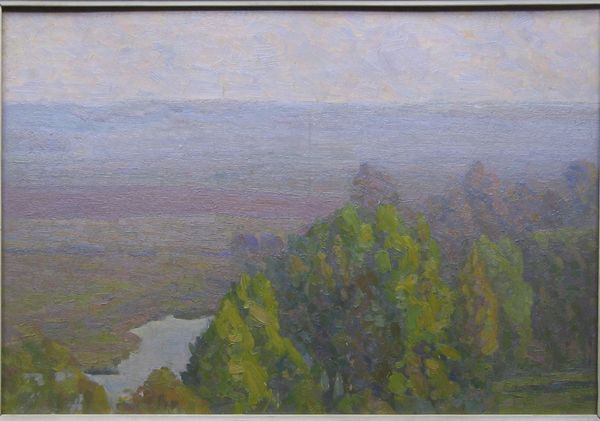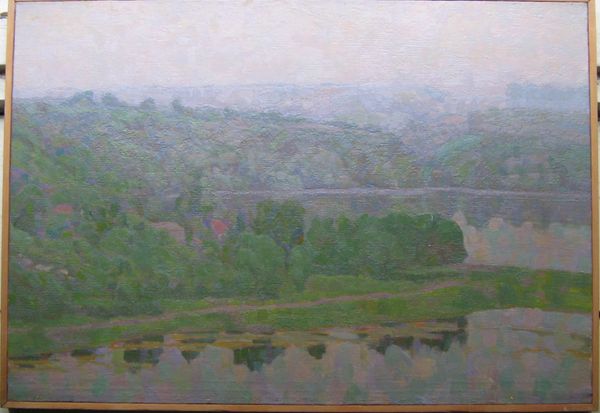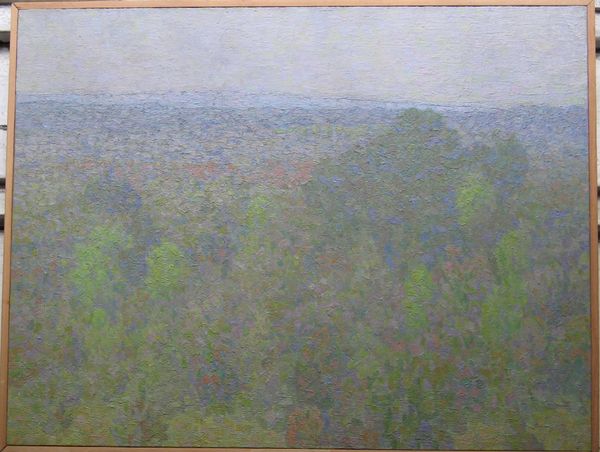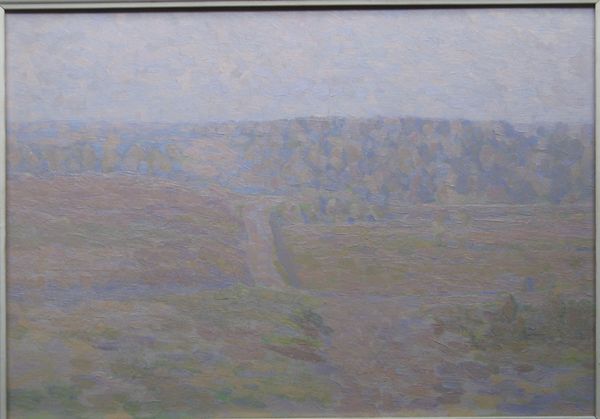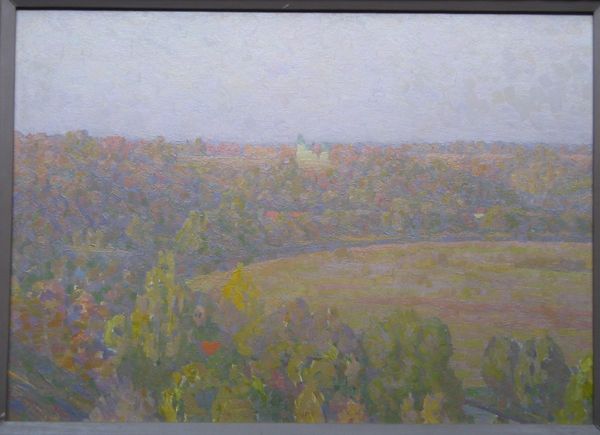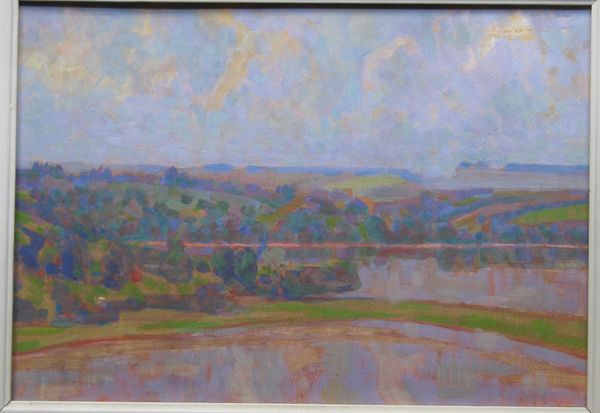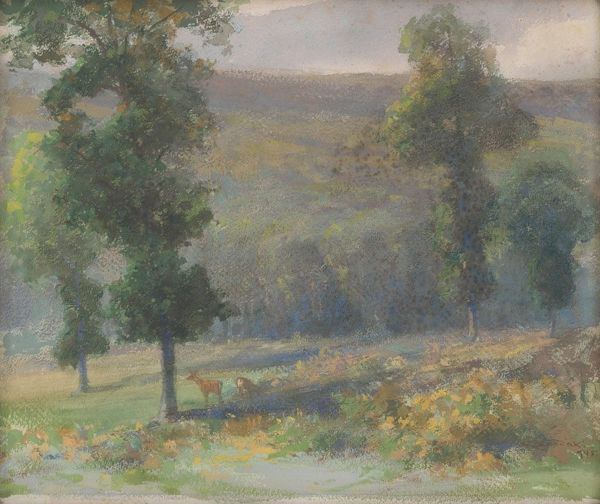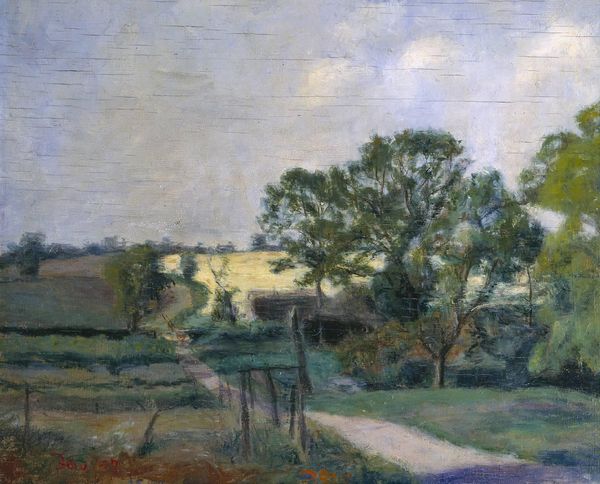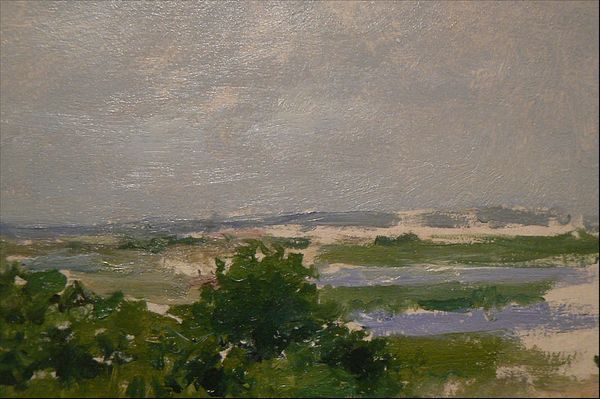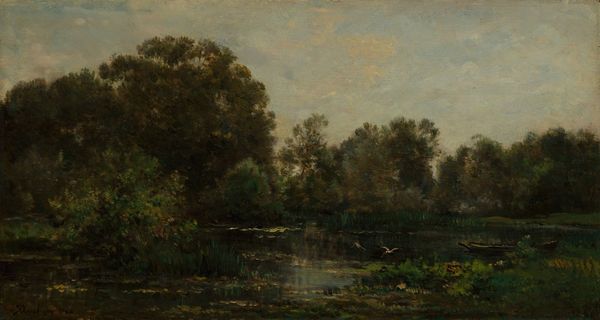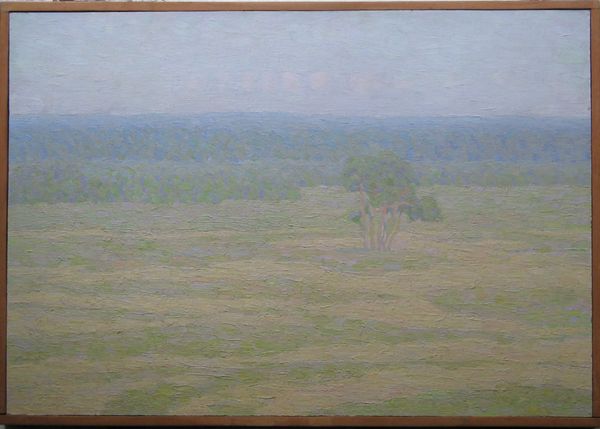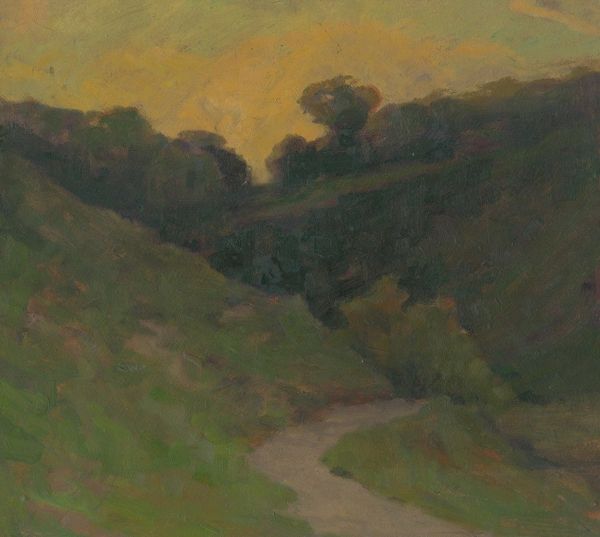
Copyright: Hryhorii Havrylenko,Fair Use
Editor: We’re looking at “Landscape. Sedniv,” painted in 1970 by Hryhorii Havrylenko. It’s an oil painting, and the colors create such a muted, almost dreamlike quality. It feels very soft and tranquil. What compositional elements stand out to you? Curator: The composition’s strength lies in its subtle layering and the modulation of tones. Observe how the artist uses atmospheric perspective. The foreground displays more discernible brushstrokes, becoming progressively indistinct towards the horizon. This creates spatial depth not through stark contrast, but through tonal variation. Editor: That's interesting. I hadn't thought of the brushstrokes as contributing to the depth, but I can see how that works. The almost monochromatic palette is striking, too. Curator: Precisely. The restricted color palette enhances the painting’s formal coherence. Consider the structural interplay between the horizontal bands of landscape and the verticality suggested by the implied trees. There is a delicate tension created, wouldn’t you agree? Editor: Yes, definitely. The limited color scheme seems to enhance the structural composition, giving the painting a unique solidity even with its dreamlike haze. Curator: Precisely. Furthermore, examine the texture achieved through the impasto technique, which gives a tactile dimension, contrasting the hazy imagery with an unexpectedly rough surface. Editor: That's a great observation; focusing on texture reveals something new each time I look at the painting! I really appreciate you breaking down the pictorial components. Curator: The pleasure is all mine. Appreciating how such components orchestrate to form meaning allows for profound insight.
Comments
No comments
Be the first to comment and join the conversation on the ultimate creative platform.
